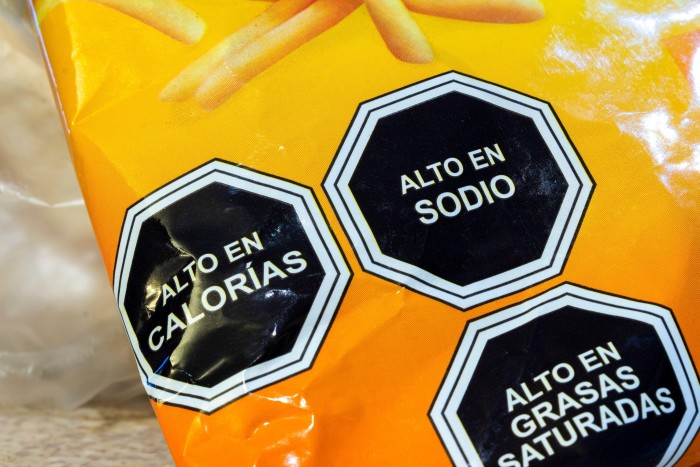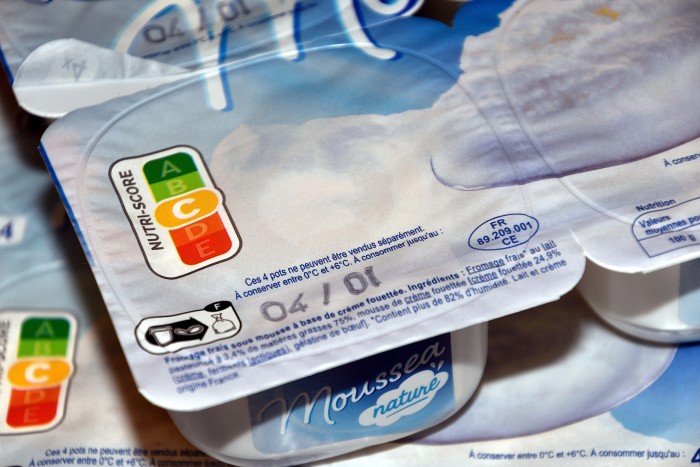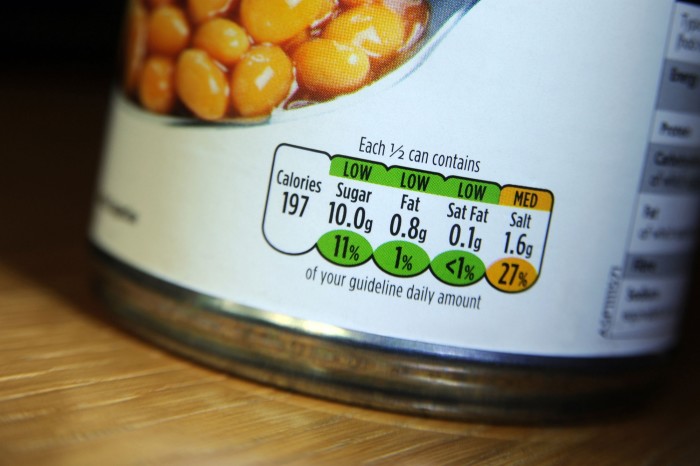Food campaigners push for clearer labelling on nutrition risks

Roula Khalaf, Editor of the FT, selects her favourite stories in this weekly newsletter.
Unhealthy food is deadlier than tobacco. That was the stark conclusion of a 2019 study in the medical journal The Lancet, which found that diets with a high intake of sodium and a low intake of whole grains and fruits were responsible for one in five deaths in 2017. The figure for smoking-related deaths that year was about one in eight.
Bad diets have also caused a tripling of obesity rates — which are linked to strokes, high blood pressure and heart disease — since 1975. A report from campaigning organisation World Obesity estimates that, by 2035, more than half the world’s population will be obese.
As these statistics suggest, there are no easy solutions to a health crisis that stems, at least in part, from people’s choices about what to eat. But one approach that many health authorities have tried is the adoption of front-of-package (FOP) labels. The idea is not simply to alert consumers to the risks of different foods, but also to motivate companies to reformulate products.
One country taking a tough line — and much studied by policymakers — is Chile, which deployed a new FOP scheme in 2016. It takes a threefold approach: restricting marketing; banning the sale of unhealthy foods in school; and, most conspicuously, mandating the application of large black warning labels to any products deemed to be high in calories, high in saturated fat or high in sugar. Similar warning labels have since been adopted in Israel.
“It took us 10 years to actually get those labels in the market,” says Gabriela Fretes, an associate research fellow at the International Food Policy Research Institute. Then, from 2016 to 2019, Fretes evaluated changes to children’s diets after the implementation of the law. “It seems that it’s working,” she says, “and that there are no side effects to companies.”

Fretes’s study of 349 children found that, compared with pre-policy levels, the total amount of sugar consumed by children at school decreased by 4.5 per cent in 2018 and nearly 12 per cent in 2019. Her research also found a decrease in the intake of saturated fats and sodium at school over the same period.
In addition, Chile’s food labelling law prompted companies to reformulate their products. One study, published in the journal Plos Medicine in 2020, found that there was “a significant decrease in the amount of sugars and sodium in several groups of packaged foods and beverages” after the law was passed.
Similar effects have been observed elsewhere. In the UK, supermarkets and manufacturers — although not obliged to by law, as in Chile — have chosen to use an intuitive “traffic light” system for FOP nutritional labelling. The move followed voluntary guidance issued by the British government in 2013. Soon after, in 2015, the supermarket chain Sainsbury’s committed to reducing the number of “red lights” on its own-brand products.
Similarly, in the US, a 2006 regulation requiring manufacturers to label foods that contain trans fats — a particularly unhealthy kind of fat found at high levels in some processed foods — prompted a wave of reformulation to remove them.
Another popular method of labelling is the Nutri-Score — a system developed by French researchers (based on a UK nutrient profiling method) and adopted by the French government in 2017. This grades foods from A to E according to their nutritional value, and has been recommended by the European Commission and the World Health Organization. It has also been approved for use in Belgium, Spain and Portugal.

In the US, though, potential FOP initiatives are complicated by the First Amendment, which protects freedom of speech and prohibits the government from compelling people and, to a certain extent, companies from saying things that they do not want to say. Efforts to require mandatory warning labels may therefore be open to legal challenge, and so the nutritional labelling enforced by the Food and Drugs Administration (FDA) is minimal — restricted to serving size, servings per container, and nutrient amounts.
However, the launch last year of the White House’s national strategy on nutrition, hunger and health may mean that change is afoot. “Very prominent in that strategy was FOP food labelling, which is a really big deal because it’s the first time this has become a major priority,” says Christina Roberto, associate professor of health policy at the University of Pennsylvania. The FDA, she adds, is currently doing research into FOP labelling and proposing potential schemes.
Even so, Roberto admits that a truly effective system would risk legal challenges. “We know interpretive systems that are very intuitive, people are going to understand [them],” she says. “But legal scholars and advocates are trying to figure out what the line is. How good a system could we get that really communicates well to consumers without opening it up to threat of a lawsuit from industry?”
Perhaps the biggest barrier to food labelling is lobbying from multinational food manufacturers. “It’s like tobacco,” says Graham MacGregor, professor of cardiovascular medicine at the Wolfson Institute, Queen Mary University of London. “We’re up against the biggest and most powerful industry in the world . . . and they’ll do everything to keep selling these cheap, very profitable foods.”
In 2010, the European parliament held a vote on whether the EU should adopt a compulsory traffic-light labelling system. This was rejected in favour of an alternative scheme known as guideline daily amounts (GDAs), which lists percentages of recommended daily allowances in each serving.

Transparency campaigners and MEPs accused the food industry of a large-scale lobbying campaign — costing as much as €1bn — to push the vote in its favour. The CIAA, the European food industry’s trade body (now called FoodDrinkEurope, FDE), noted that “democratically elected” MEPs had “clearly rejected” the traffic light proposal, which it said “fail[ed] to take into account the place of a foodstuff in the context of a balanced diet and healthy lifestyle”.
Efforts to legislate for EU-wide mandatory labelling have since been unsuccessful. However, in 2020, the European Commission published its Farm to Fork Strategy, which committed to “propose harmonised mandatory front-of-pack nutrition labelling” by 2022, though this deadline was subsequently pushed back.
Manufacturers continue to have reservations. In a written statement, FDE told the FT that it does not support warning labels, is neutral towards traffic lights and Nutri-Scores, and that a co-ordinated approach to labelling should not “be used as a tool to discriminate against specific food products, food categories, nutrients or ingredients as being healthy or unhealthy per se”. It favours a “broader approach, focused on . . . improving consumer education and encouraging balanced diets and healthy lifestyles”.
Roberto acknowledges that no policy is perfect, but thinks that the urgency of the situation warrants schemes such as those in Chile and France. “We have a really massive public health crisis, where essentially the industry controls our food supply,” she says. “So the notion of informing the public about what’s in their food, I find it very hard to argue against that.”

Comments